One of East London’s earliest hospitals is currently being gutted, and there’s been a chance to see inside as they work to turn it into Tower Hamlet’s new Town Hall.
Built in 1757 when Whitechapel was still largely fields and strange left-overs from the English Civil War, the London Hospital has occupied a grand building on the main road ever since.
It became the Royal only as recently as 1990, but in 2005, it was decided to build a replacement hospital behind the old building, and a deal, somewhat controversial at the time, was agreed to convert the old building into Tower Hamlet’s town hall.
What looks like a large single building is actually a number of buildings that have expanded and merged over the years. The original hospital building sits in the centre, but the grand frontage we see today is actually a Victorian facade added on the front of the old building.
Two large wings on either side were added, tripling the size of the hospital, and over the past century, a cluster of shabby buildings filled up the gaps around the back.
The plans are to demolish the old buildings at the back and replace them with modern office spaces, while the innards of the old hospital building are being stripped back for conversion into more offices — all for the council.
Having been a hospital, even one in so impressive a building as this, its function was medical first and heritage second, so there’s little left of the old Georgian structure to salvage. The grand Victorian staircase is to be retained, and some of the old operating theatres will keep some decorative features, while the Victorian terrazzo flooring will be restored.
The truncated chapel will be restored, and turned into the staff canteen, although that’s now costing more than expected as the chapel suffered a lot of water damage after the hospital vacated the site.
Unsurprisingly for a building that’s evolved and changed over the years, they’ve found a lot of unexpected problems with stripping away the layers of industrial medical function so that the wards can be turned into offices.
Originally budgeted at £77 million, costs rose to £105 million, then again to £115 million as they found far more asbestos than expected, and also walls thought to be just partitions unexpectedly turned out to be structural. A tunnel running under the building turned out to be a bit different in reality from the plans.
Although the costs have jumped, they’re still looking at this as a long term cost saver for the council.
Of the £115 million current budget, they expect to pay back around £78 million from selling other buildings and moving staff to the new Town Hall. They also pay £5 million a year for the current Town Hall building in Blackwall, so the net impact is expected that they will have paid off the cost of the new building within 10 years, then saving around £5 million each year thereafter.
What they will have is a “one-stop-shop” approach to council services which also aims to improve how the council provides its services. One public aspect is that the eastern wing of the building, known as the Grocers Wing will have a double-height ground floor space for community services and local shared working offices.
The design of the new space will see the solid brick wall at the ground floor removed, and replaced with glass, so it will appear as if a large slot has been cut into the bottom of the building. Looks good in CGI, whether it will work in practice is will be down to the quality of the detailing in the final finish.
In the centre of the Victorian frontage, a grand clock turned out to be rather less impressive up close — it’s run off a battery. The space up here, rich in wooden supports was to be cleared until it turned out the wooden supports thought to be just loose partitions are holding up the roof, so something else needs to be done with the space.
Although the hospital archive went around identifying things to save, as the walls were stripped back unexpected finds turned up, including a WW1 air raid helmet and old newspapers from 1911.
The walls and ceilings are themselves revealing hidden mysteries about the building. Long lost bricked-up windows that no one knew had existed, to wooden blocks inset into the walls, and very curious concrete ceilings.
It’s expected that a lot of these features will be left exposed, as they add character to a building that was once, of necessity, clean and spartan. Colour details for the new offices will be designed to match the original flooring, which they aim to restore under the decades of coverings that were piled on top.
One of the oddities of the frontage that many people who looked up would have wondered at is a curious wooden block that sticks out from the brick wall. This turned out to be part of an operating theatre, and the wooden protrusion is standing space for students learning the art of surgery.
That will be retained as part of the refurbishment of the building, and will likely end up as an office for political meetings, which may be more animated than the anaesthetized patient who would once have dominated the room.
The site access was to mark an official event — the burying of a time capsule in the brick wall by the current Mayor of Tower Hamlets.
The conversion is due to be completed in 2022.
Some more photos

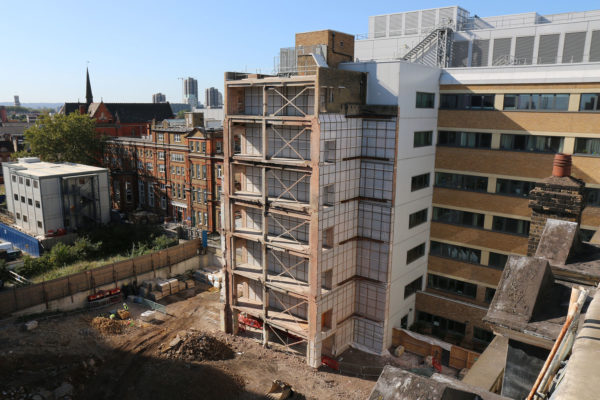
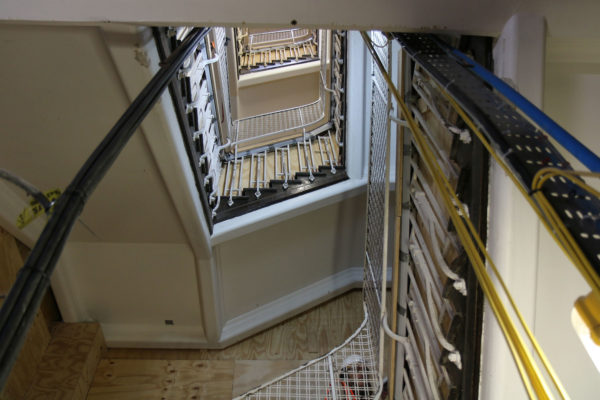
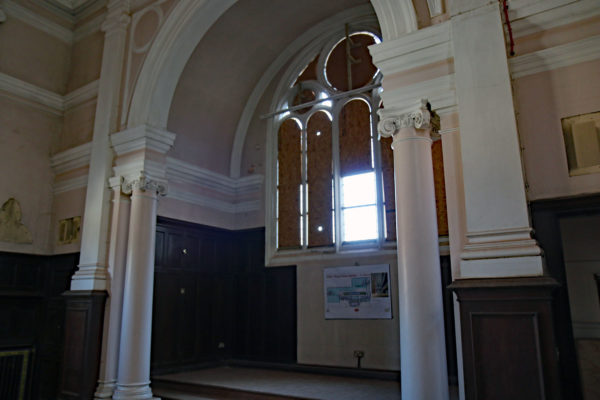
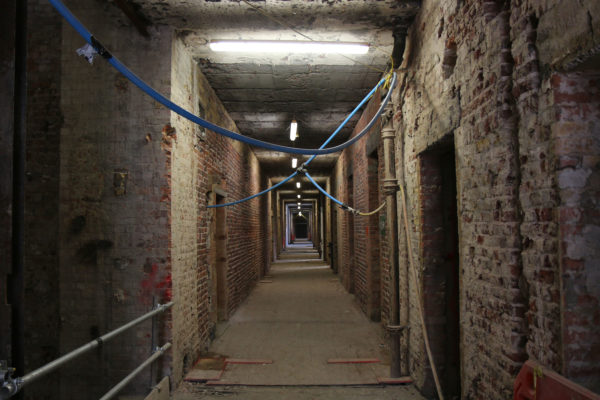
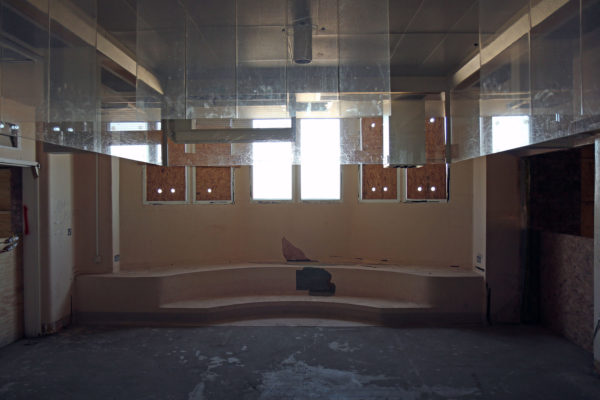
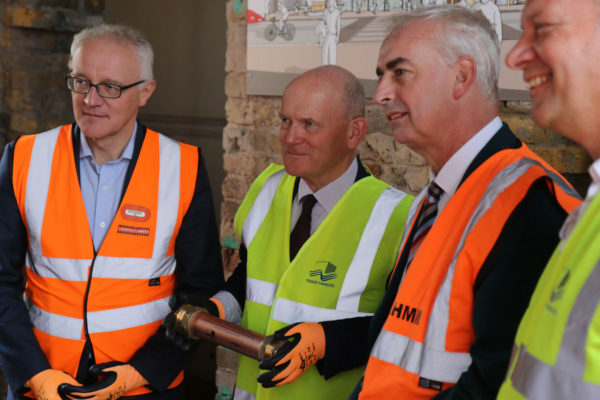
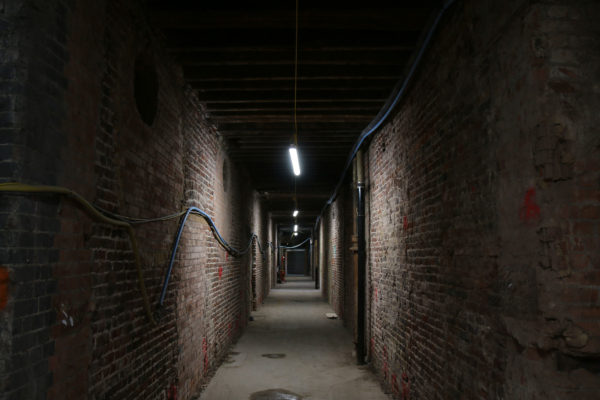
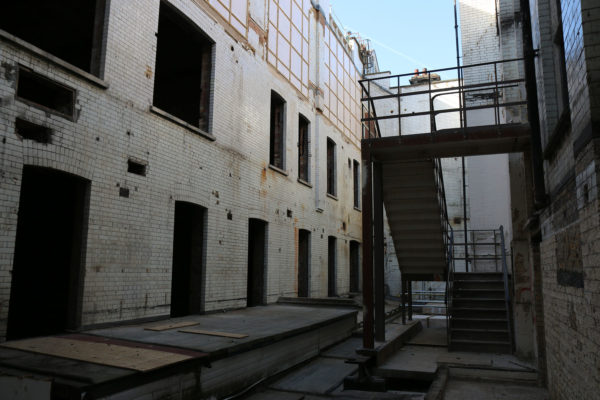
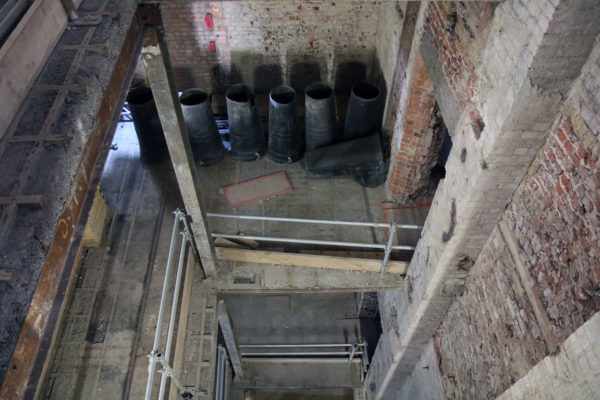
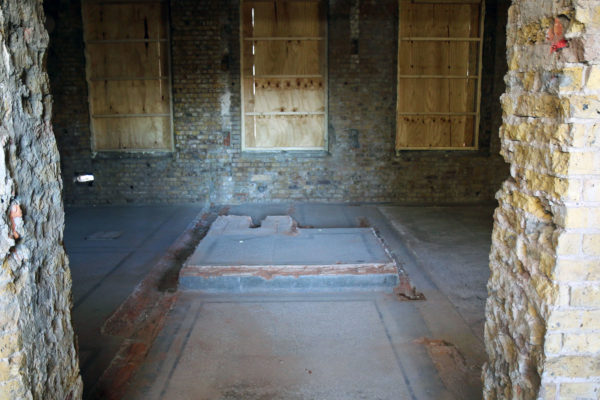
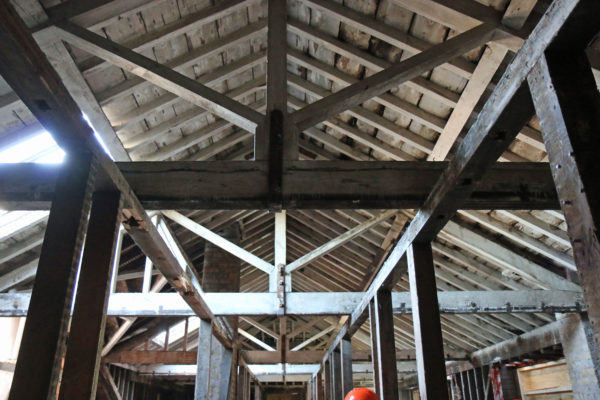
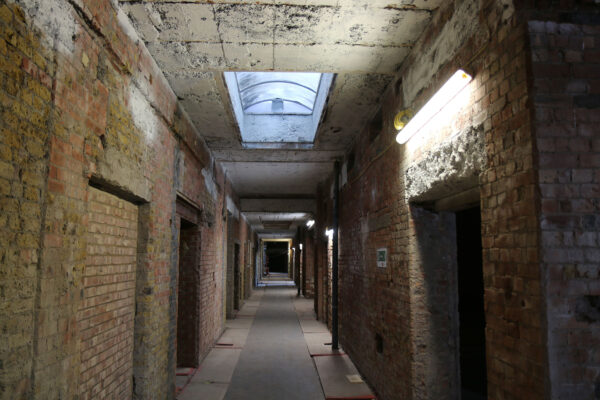
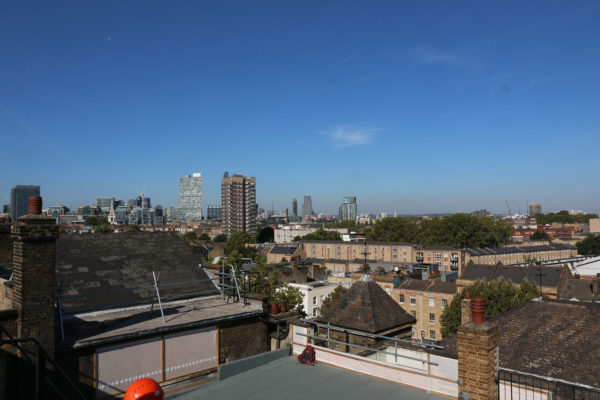
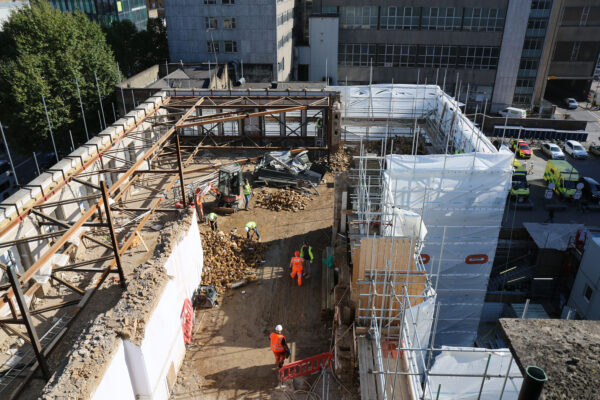
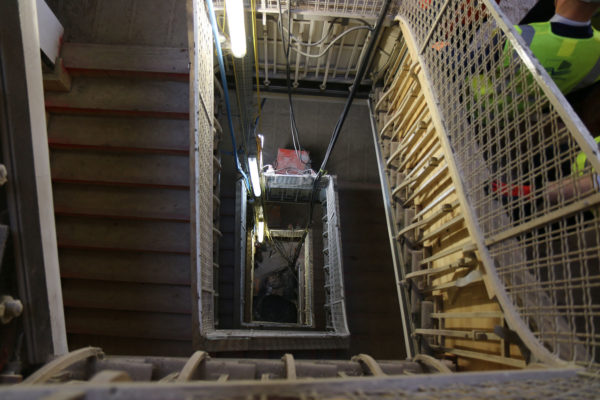
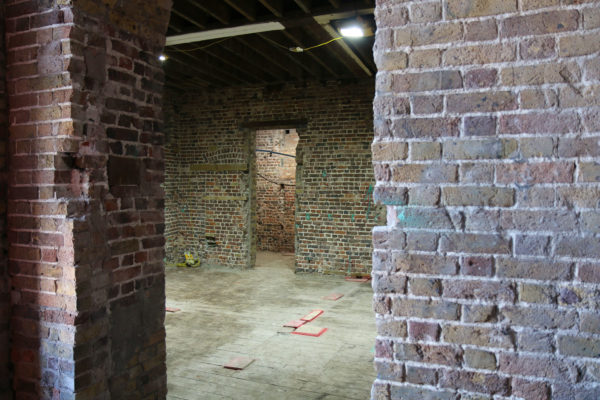
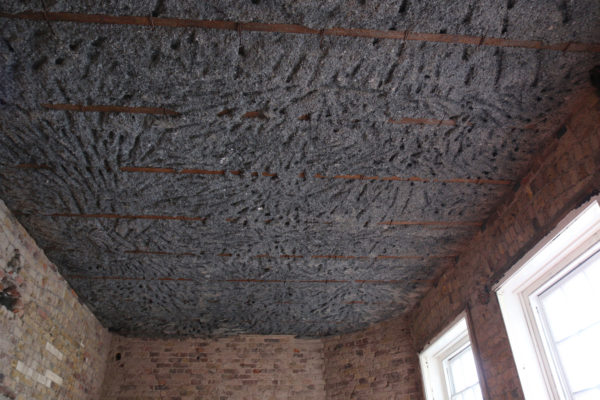






Hi IanVisits
Can others visit? My wife’s great-Aunt was a nurse there in the war, and then one of the first tranche of newly admitted female doctors after WW2. She would have (potentially) been one of the medical students watching the ‘art of surgery’.
It’s a building site and not open to the public. Sorry.
Which firm of Architects is working on this?
If its not open to the general Public how did you get in for these images?
The same way all writers/photographers go into private places — we ask or are invited in by the owners.
The ‘current’ mayor of Tower Hamlets, technically correct but it gives the impression that John Biggs is a ceremonial, one year mayor. In fact he is one of four directly elected mayors in London and is elected for four years as an executive mayor. He was first elected in 2015 in a by election and is current term lasts until 2022.
I have no idea how you came to the conclusion that the phrase “current Mayor of Tower Hamlets” gave the impression that the role is ceremonial.
Thank you. This is a bit sad but also encouraging. I was born there and decided to have a quick shuftie on Google Earth. It looked a right two ‘n’ eight and, sure enough, it is! Well, I can only hope they can preserve the facade whilst updating it for contemporary medical use. I’ll have to take ball and chalk around there and take butcher’s next time I’m in “the Smoke”. I moved a while back to the “colonies” so only get back about yearly. Cheers, and thanks for your article.
I trained as a nurse at The London, from 1970-1973. I was so privileged to have been a part of the history. I live in Canada now and my training always held me in good stead. In 2016 I visited The “Royal London”. How sad to see the dilapidated building and the changes along Whitechapel Road. it used to have lovely bakeries and fruit and vegetable stands along the road. Now it is dirty and old. However, I am grateful for the memories and the great friend I still have.
I trained as a nurse at The London & feel very sad & agrieved at the demise of the old hospital 1962 to 1965 & wonder why it could not remain a grand front to the new hospital complex.
What has happened to the arresting gold sign “The Royal London Hospital?”
I worked and was a patient in the Old London Hospital it is a shame the way the buildings have been pulled down, So much history just taken away, I wished the buildings could have been used , at least Tower Hamlets Council are planning to incorporate some of the old hospital infrastructure into their new HQ.
Was wondering what they intend to do with the old outpatient building.